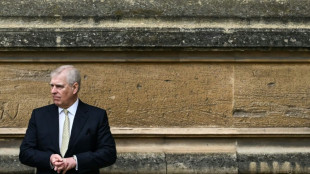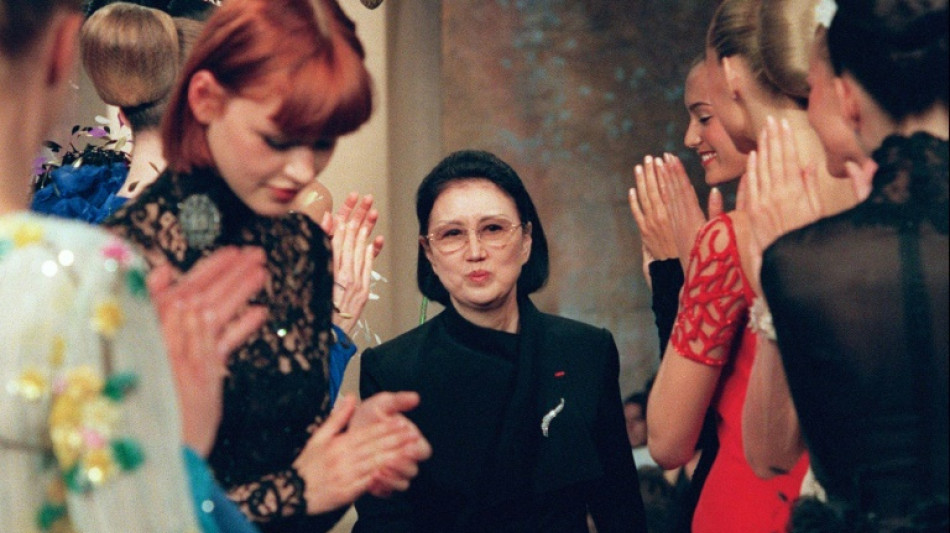
-
 Bills outlast Chiefs while NFL-best Colts fall to Steelers
Bills outlast Chiefs while NFL-best Colts fall to Steelers
-
NBA champion Thunder roll over Pelicans to remain unbeaten

-
 Eliud Kipchoge unveils plan to run 7 marathons on 7 continents
Eliud Kipchoge unveils plan to run 7 marathons on 7 continents
-
Milan deny Roma top spot in Serie A, Inter beat Verona

-
 Lens back up to third in Ligue 1 as Lyon held at Brest
Lens back up to third in Ligue 1 as Lyon held at Brest
-
NFL-best Colts fall to Steelers, Packers lose to Carolina

-
 'Regretting You' wins spooky slow N. American box office
'Regretting You' wins spooky slow N. American box office
-
'Just the beginning' as India lift first Women's World Cup

-
 Will Still sacked by struggling Southampton
Will Still sacked by struggling Southampton
-
Malinin wins Skate Canada crown with stunning free skate
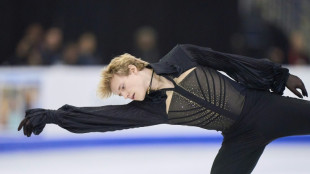
-
 Barca beat Elche to recover from Clasico loss
Barca beat Elche to recover from Clasico loss
-
Jamaica deaths at 28 as Caribbean reels from colossal hurricane

-
 Verma and Sharma power India to first Women's World Cup triumph
Verma and Sharma power India to first Women's World Cup triumph
-
Auger-Aliassime out of Metz Open despite not yet securing ATP Finals spot

-
 Haaland fires Man City up to second in Premier League
Haaland fires Man City up to second in Premier League
-
Sinner says staying world number one 'not only in my hands'

-
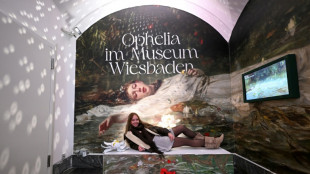 Ready for it? Swifties swarm German museum to see Ophelia painting
Ready for it? Swifties swarm German museum to see Ophelia painting
-
Pope denounces violence in Sudan, renews call for ceasefire

-
 Kipruto, Obiri seal Kenyan double at New York Marathon
Kipruto, Obiri seal Kenyan double at New York Marathon
-
OPEC+ further hikes oil output

-
 Sinner returns to world number one with Paris Masters win
Sinner returns to world number one with Paris Masters win
-
Sinner wins Paris Masters, reclaims world No. 1 ranking

-
 Nuno celebrates first win as West Ham boss
Nuno celebrates first win as West Ham boss
-
Obiri powers to New York Marathon win

-
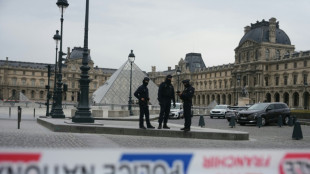 Two Louvre heist suspects a couple with children: prosecutor
Two Louvre heist suspects a couple with children: prosecutor
-
Verma, Sharma help India post 298-7 in Women's World Cup final

-
 Inter snapping at Napoli's heels, Roma poised to pounce
Inter snapping at Napoli's heels, Roma poised to pounce
-
India space agency launches its heaviest satellite

-
 Wolves sack Pereira after winless Premier League start
Wolves sack Pereira after winless Premier League start
-
Debutants Berkane among CAF Champions League top seeds

-
 Sundar steers India to five-wicket win over Australia in 3rd T20
Sundar steers India to five-wicket win over Australia in 3rd T20
-
What we know about the UK train stabbings

-
 Jonathan Milan wins wet Tour de France Singapore Criterium
Jonathan Milan wins wet Tour de France Singapore Criterium
-
Canadian teen Mboko wins Hong Kong Open for second WTA title
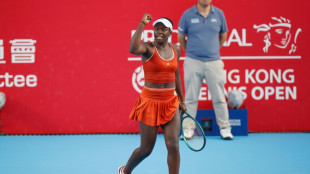
-
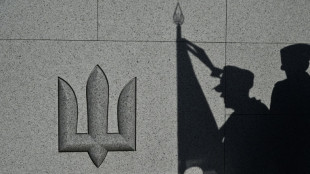 Two children among dead in Russian blitz on Ukraine
Two children among dead in Russian blitz on Ukraine
-
South Africa opt to bowl against India in Women's World Cup final

-
 Dominant McKibbin wins Hong Kong Open to seal Masters spot
Dominant McKibbin wins Hong Kong Open to seal Masters spot
-
US Navy veterans battle PTSD with psychedelics

-
 'Unheard of': Dodgers in awe of iron man Yamamoto
'Unheard of': Dodgers in awe of iron man Yamamoto
-
UK police probe mass train stabbing that wounded 10

-
 'It's hard' - Jays manager Schneider rues missed chances in World Series defeat
'It's hard' - Jays manager Schneider rues missed chances in World Series defeat
-
Women's cricket set for new champion as India, South Africa clash

-
 Messi scores but Miami lose as Nashville level MLS Cup playoff series
Messi scores but Miami lose as Nashville level MLS Cup playoff series
-
Dodgers clinch back-to-back World Series as Blue Jays downed in thriller

-
 Vietnam flood death toll rises to 35: disaster agency
Vietnam flood death toll rises to 35: disaster agency
-
History-making Japan golf twins push each other to greater heights
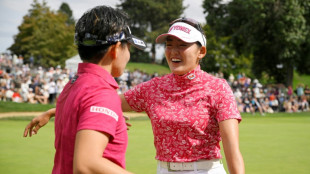
-
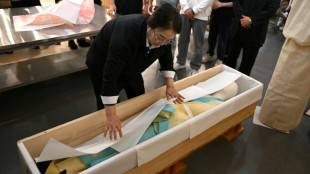 Death becomes a growing business in ageing, lonely South Korea
Death becomes a growing business in ageing, lonely South Korea
-
India's cloud seeding trials 'costly spectacle'

-
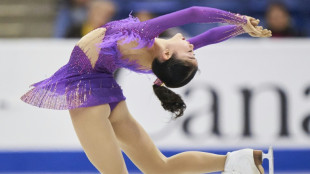 Chiba wins women's title, Malinin leads at Skate Canada
Chiba wins women's title, Malinin leads at Skate Canada
-
Siakam sparks injury-hit Pacers to season's first NBA win


Hanae Mori: grande dame of Japanese fashion
Japanese designer Hanae Mori, who cracked the Parisian haute couture world and was dubbed "Madame Butterfly" for her signature motif, has died in Tokyo aged 96, her office told AFP.
Over the decades Mori's luxurious creations were worn by Nancy Reagan, Grace Kelly and countless members of high society.
But she was also a pioneer for Japanese women, one of a tiny number to head an international corporation.
An employee at Mori's office said Thursday that she died at home "of old age" on August 11, and that a private funeral had taken place.
The designer's trailblazing career took her from Tokyo, where she started out making costumes for cinema, to New York and Paris -- and in 1977 her label became the first Asian fashion house to join the rarefied ranks of haute couture.
The exclusive French club sets exacting standards for their hand-crafted, and extremely expensive, garments.
"When humans work with their hands, their creativity expands," Mori told AFP during a 2006 retrospective in Tokyo, where a robot modelled a replica of her classic "Chrysanthemum Pyjamas" -- a kimono-like robe made from hot-pink chiffon and silk.
In January, the designer summed up her feelings toward the industry in a special column for Japan's Yomiuri Shimbun daily.
"Fashion is something that pushes you, gives you courage to spread your wings and allows you to have adventures," she said.
- Encounter with Chanel -
Born in 1926 in a rural corner of western Japan, Mori studied literature at Tokyo Women's Christian University before turning her hand to design.
She opened her first atelier above a noodle shop in Tokyo, and came to specialise in dressing the stars of the silver screen.
As Japan's postwar economy grew, so did her business, which she ran with her husband -- a textile executive who encouraged her to visit Paris and New York when the arrival of television made the film industry less profitable.
"This was a kind of turning point for me," she once said of the trips in the early 1960s, during which she met Coco Chanel in Paris.
It turned out to be an inspirational encounter.
When she stepped into Chanel's studio the iconic designer suggested she wear something in bright orange to contrast with her black hair.
Taken aback, it got Mori thinking.
"The whole Japanese concept of beauty is based on concealment... I suddenly realised that I should change my approach and make my dresses help a woman stand out," she said, according to the Washington Post.
- 'East Meets West' -
In 1965, Mori unveiled her first collection abroad, in New York, under the theme "East Meets West".
Her designs combined traditional patterns like cranes and cherry blossoms -- and her trademark butterflies -- with Western styles, from woollen suits to sharp satin tailoring.
Mori moved her brand from Tokyo to Paris in the late 1970s and was quickly embraced by fashion insiders.
She saw a distinction between herself and her Japanese peers who later made a global name for themselves -- such as Issey Miyake, Yohji Yamamoto and Rei Kawakubo of Comme des Garcons fame.
"The young Japanese designers who live in Paris are passionately avant-garde," she told the Washington Post. "I am not. I love to follow the traditional way."
Mori built her brand into a business empire, which in its heyday occupied a whole building in Tokyo designed by the architect Kenzo Tange -- later torn down and replaced with another structure at typical Japanese speed.
From the loss of the building to the retirement of her fashion house from haute couture, "not everything was positive", she reflected in her Yomiuri column.
"It was like my butterfly wings were torn off. But this butterfly was able to fly all over the world for 70 years, because I loved making clothes."
- 'Wanted to be different' -
Mori designed the gown worn by princess Masako -- now empress -- at her 1993 wedding, as well as uniforms for Japan Airlines flight attendants.
And in 1985, she created stage costumes for, appropriately, "Madame Butterfly" performed at La Scala in Milan.
But with growing losses in the early 2000s, her empire was largely sold off and she shuttered her Paris atelier in 2004 after her last couture show there.
Hanae Mori boutiques remain open in Tokyo and her fragrances are still sold worldwide.
As a powerful businesswoman, Mori was a rarity in Japan, where boardrooms are still heavily male-dominated.
Speaking of her early married life, she once remarked that she was never invited out with her husband's friends.
At that time "Japan was a gentlemen's country", she said, but "I wanted to be different".
D.Qudsi--SF-PST

